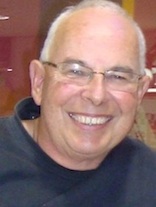

Bruce Holland:
Workplace Wizard
Contact Bruce
| ph |
| +64 21 620 456 |
| Skype |
| bruce.holland |
| 16 Kauri Street, Woburn, Hutt City, Wellington, New Zealand |
| Bruce.Holland @virtual.co.nz |
 |
FOCUS
When Steve Jobs returned to Apple in 1997, it was producing a random array of computers and peripherals, including a dozen different versions of the Macintosh. After a few weeks of product review sessions, he’d finally had enough. “Stop!” he shouted. “This is crazy.” He grabbed a Magic Marker, padded in his bare feet to a whiteboard, and drew a two-by-two grid. “Here’s what we need,” he declared. Atop the two columns, he wrote “Consumer” and “Pro.” He labeled the two rows “Desktop” and “Portable.” Their job, he told his team members, was to focus on four great products, one for each quadrant. All other products should be canceled. There was a stunned silence. But by getting Apple to focus on making just four computers, he saved the company. “Deciding what not to do is as important as deciding what to do,” he told me. “That’s true for companies, and it’s true for products.”
After he righted the company, Jobs began taking his “top 100” people on a retreat each year. On the last day, he would stand in front of a whiteboard (he loved whiteboards, because they gave him complete control of a situation and they engendered focus) and ask, “What are the 10 things we should be doing next?” People would fight to get their suggestions on the list. Jobs would write them down—and then cross off the ones he decreed dumb. After much jockeying, the group would come up with a list of 10. Then Jobs would slash the bottom seven and announce, “We can only do three.”
The Real Leadership Lessons of Steve Jobs, by Walter Isaacson, HBR April 2012


